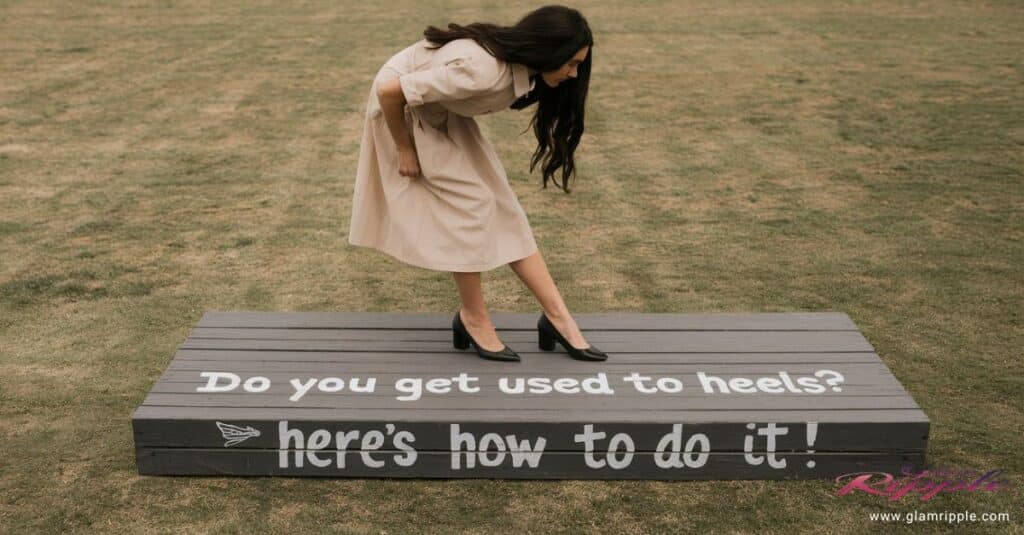High heels can transform your posture, boost your confidence, and elevate any outfit. However, let’s be honest—getting comfortable in them isn’t always easy. Do You Get Used to Heels? Here’s How to Do It! is your go-to guide for mastering the art of walking in heels.
From tips on improving balance to building comfort over time, Do You Get Used to Heels? Here’s How to Do It! offers practical advice to help you embrace the elegance of heels without the discomfort, making this journey a little more manageable.
Whether you’re a stiletto novice or a pump pro looking to up your game, this comprehensive guide will help you conquer the world of heel shoes with style and comfort.
The Timeline of Heel Adaptation: Patience Is Your Best Friend
Ever wondered, “How long does it take to get used to wearing heels?” The truth is, there’s no one-size-fits-all answer. Getting used to heels is a journey that varies from person to person, but understanding the factors at play can help set realistic expectations.
Factors Affecting Your Heel Adaptation:
- Heel height and type: A kitten heel will naturally be easier to master than a sky-high stiletto.
- Frequency of wear: Regular practice accelerates adaptation.
- Individual foot structure: Some feet are naturally more suited to heels than others.
“Rome wasn’t built in a day, and neither is heel mastery. Give yourself time to adjust, and you’ll be strutting with confidence before you know it.” – Renowned podiatrist Dr. Emily Soles
What to Expect: A 4-Week Heel Adaptation Timeline
| Week | Expectation |
|---|---|
| 1 | Improved balance, but still some soreness after extended wear |
| 2 | Increased comfort, and better posture when walking |
| 3 | Increased comfort, better posture when walking |
| 4 | Noticeable improvement in gait and overall comfort |
Remember, this timeline is a general guide. Your journey might be shorter or longer, and that’s perfectly okay!
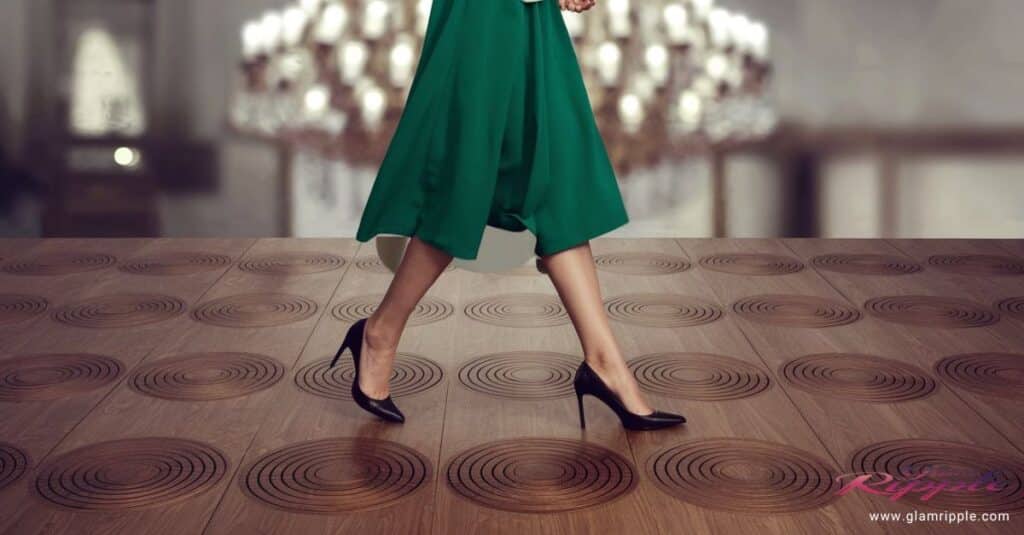
Do you get used to heels? Here’s how to do it! Heel Hierarchy: From Beginner-Friendly to Pro
Understanding the different types of heels is crucial for anyone looking to build their heel-wearing skills. Each style offers unique challenges and benefits, making them suitable for different stages of your heel-wearing journey.
Read more about getting used to heels
Kitten Heels: The Perfect Starting Point
Kitten heels are the ideal entry point into the world of high heel shoes. They’re characterized by their short, slender heel that typically measures between 1-2 inches in height.
Key features:
- Height: 1-2 inches
- Stability: High
- Comfort: Excellent for beginners
Why they’re great for beginners:
- Low height reduces strain on feet and ankles
- A wider base provides better balance
- Allows for a natural walking gait
Tips for wearing kitten heels:
- Start with closed-toe styles for added stability
- Look for pairs with ankle straps for extra support
- Wear them for short periods to build foot strength
“Kitten heels are like training wheels for the heel world. They help you build confidence without overwhelming your feet.” – Celebrity stylist Rachel Zoe
Block Heels: Stability Meets Style
Block heels offer a perfect balance between fashion and function. Their wider base distributes weight more evenly, making them easier to walk in than slimmer heels.
You might also like The Guide to Dress Lengths
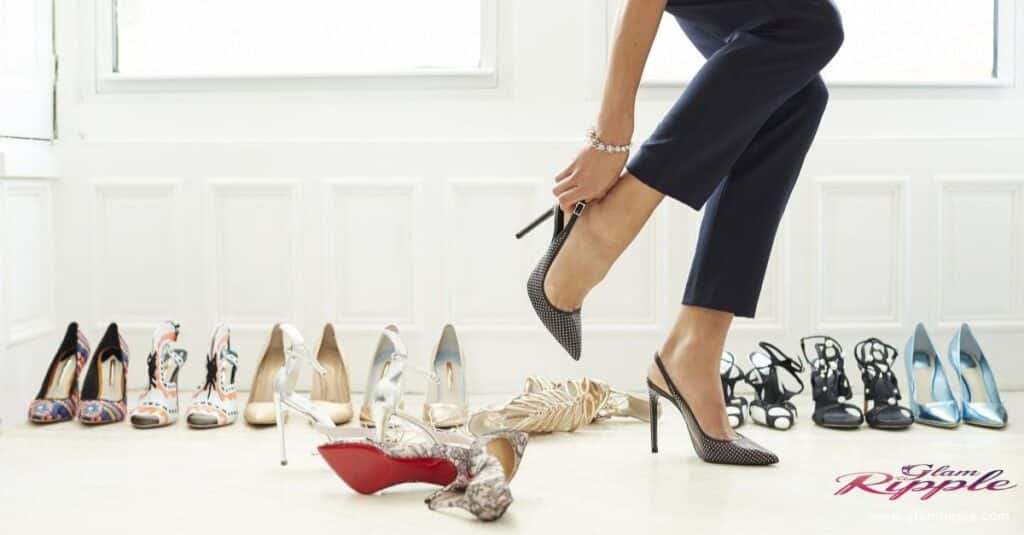
Key features:
- Height: 2-4 inches
- Stability: Very good
- Comfort: Great for extended wear
Why they’re a step up:
- Increased height for a more dramatic look
- A sturdy base reduces wobbling
- Versatile enough for both casual and formal occasions
Tips for mastering block heels:
- Practice walking on different surfaces (carpet, hardwood, pavement)
- Focus on heel-to-toe movement when walking
- Start with lower block heels (2 inches) before progressing to taller styles
Wedges: Full-Foot Support for Longer Wear
Wedges are a favorite for those seeking height without sacrificing comfort. The continuous sole from heel to toe provides excellent support and stability.

Key features:
- Height: 2-5 inches
- Stability: Excellent
- Comfort: Ideal for all-day events
Benefits of wedges:
- Even weight distribution across the entire foot
- Reduced pressure on the ball of the foot
- Suitable for various terrains, including grass (great for outdoor events)
Must read A Guide To Wearing Tea Dresses
Mastering wedges:
- Start with lower wedges and gradually increase the height
- Practice walking up and down inclines
- Experiment with different materials (cork, espadrille, wooden) for varied experiences
Do you get used to heels? Here’s how to do it! Stilettos: The Ultimate Challenge
Stilettos are the pinnacle of heel mastery. Their tall, thin heels demand excellent balance and strong foot muscles.
Key features:
- Height: 3-6+ inches
- Stability: Challenging
- Comfort: Requires practice and conditioning
Why stilettos are the ultimate goal:
- Dramatic height increase
- Sleek, elegant appearance
- Significant impact on posture and leg appearance
Conquering stilettos:
- Build up to stilettos gradually, starting with lower heights
- Strengthen your ankles and calves with targeted exercises
- Practice proper posture: engage your core and keep your shoulders back
Stiletto progression table:
| Stiletto Height | Experience Level | Recommended Wear Time (Initial) |
|---|---|---|
| 3 inches | Intermediate | 2-3 hours |
| 4 inches | Advanced | 1-2 hours |
| 5+ inches | Expert | 30 minutes – 1 hour |
Do you get used to heels? Here’s how to do it! Platform Heels: The Best of Both Worlds
While not traditionally part of the heel hierarchy, platform heels deserve mention as they offer a unique combination of height and comfort.
Similar Post A Guide to the White Tie Dress
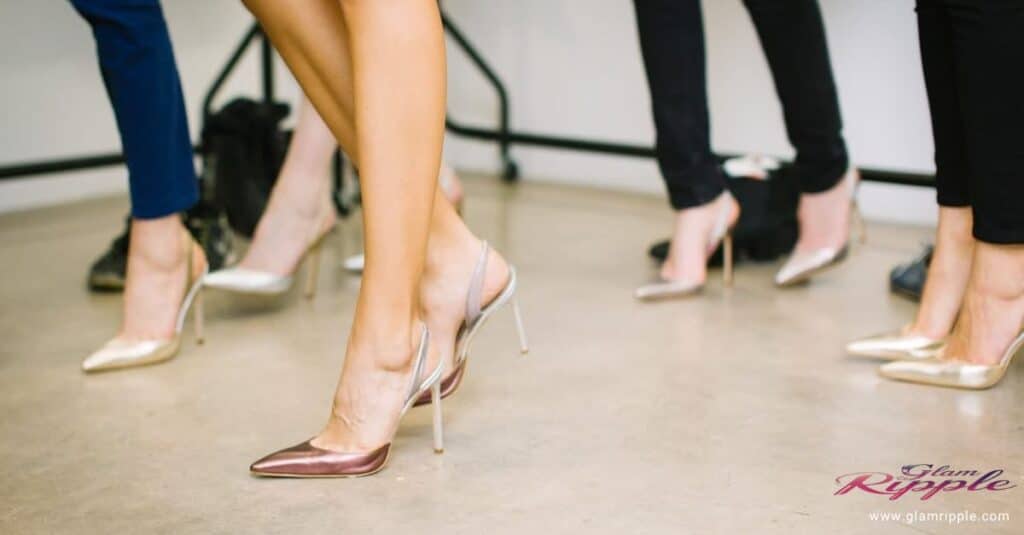
Key features:
- Height: 3-6+ inches (with 0.5-2 inch platform)
- Stability: Good to Very Good
- Comfort: Better than traditional stilettos of the same height
Why platforms are a game-changer:
- Reduced angle between heel and ball of foot
- Added height without a proportional increase in discomfort
- Often more stable than non-platform heels of the same height
Tips for wearing platforms:
- Be mindful of the total height, not just the heel height
- Practice walking in them at home, as they can feel bulky at first
- Choose styles with ankle straps for added security
Here’s how to do it! Advancing Through the Heel Hierarchy
As you progress through these heel types, remember that getting used to heels is a gradual process. Here’s a suggested timeline for advancement:
- Start with kitten heels for 1-2 months
- Move to lower block heels (2-3 inches) for another 1-2 months
- Introduce wedges and higher block heels (3-4 inches) for 2-3 months
- Begin practicing with lower stilettos (3 inches) for 1-2 months
- Gradually increase stiletto height as comfort and confidence improve
“The key to mastering any heel height is consistency. Wear them regularly, but listen to your body and don’t push too hard too fast.” – Podiatrist Dr. Samantha Foot
Remember, this timeline is just a suggestion. Your journey may be faster or slower depending on factors like natural balance, foot strength, and frequency of wear.
By understanding the heel hierarchy and approaching each type with patience and practice, you’ll be able to wear any style of heel with confidence and grace. Whether you prefer the stability of a block heel or aspire to conquer sky-high stilettos, there’s a perfect heel out there for every stage of your journey.
Do you get used to heels? Here’s how to do it! Stilettos: The Ultimate Challenge
- Height: 3-6+ inches
- Stability: Challenging
- Comfort: Requires practice and conditioning
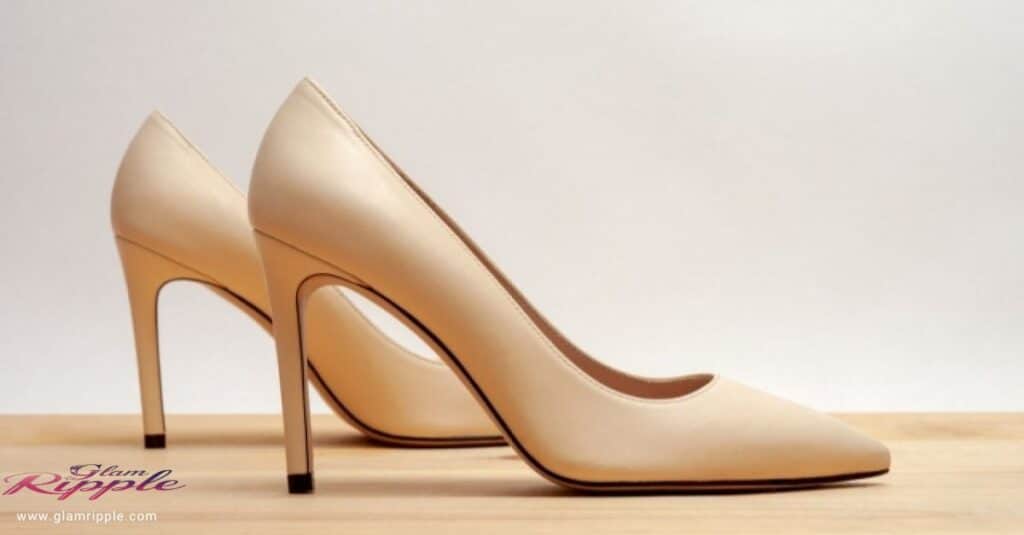
Stilettos are the pinnacle of heel mastery. Their narrow base and high height demand excellent balance and strong foot muscles.
Do you get used to heels? Here’s how to do it! Mastering the Art of the Heel Strut: Walk This Way
Learning to walk in heels with grace and confidence is a skill that takes practice. Here’s how to perfect your heel stride:
You might also like What You Should Know about 10k Gold Jewelry
- Posture perfection: Stand tall with your shoulders back and core engaged.
- The heel-to-toe technique:
- Step heel first, then roll through to your toes
- Take smaller steps than you would in flats
- Keep your legs close together as you walk
- Stair navigation:
- Going up: Place your whole foot on each step
- Going down: Step toe-first, using the handrail for support
Do you get used to heels? Here’s how to do it! Daily Exercises to Improve Balance and Strength
- Calf raises: Stand on a step, raise on your toes, hold for 5 seconds, lower. Repeat 15 times.
- Ankle rotations: Sit with your legs extended, and rotate your ankles in circles 10 times in each direction.
- Toe taps: While seated, tap your toes on the ground rapidly for 30 seconds.
Pro Tip: Practice walking in heels at home on various surfaces (carpet, hardwood) to build confidence before hitting the town.
Do you get used to heels? Here’s how to do it! Banishing Pain: Strategies for Blissful Feet
Even with practice, wearing high heels can sometimes lead to discomfort. Here’s how to reduce heel pain and keep your feet happy:
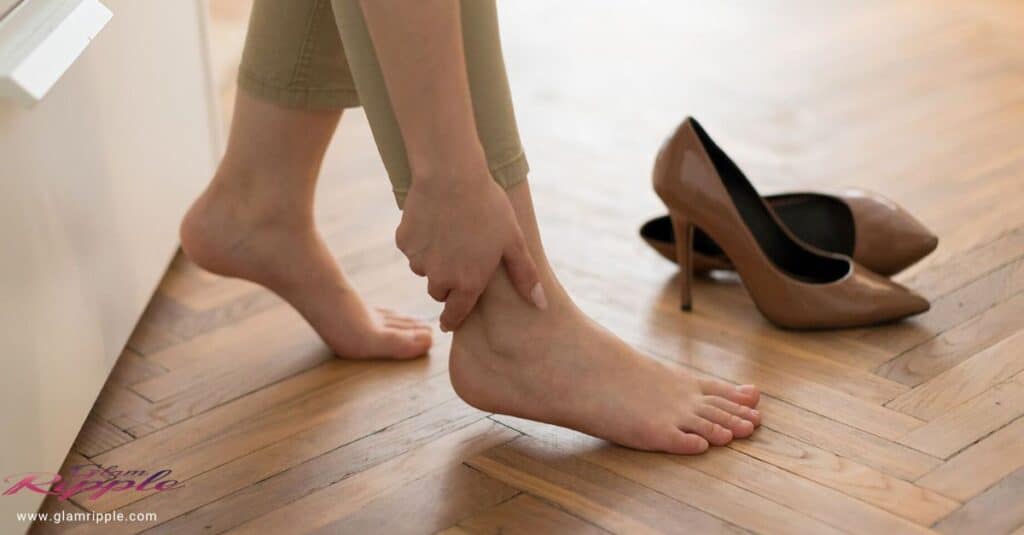
Pre-Wear Prep: Set Your Feet Up for Success
- Stretch your calves: Hold a calf stretch for 30 seconds on each leg.
- Massage your feet: Use a tennis ball to roll out the soles of your feet.
- Strengthen your toes: Practice picking up marbles with your toes.
During Wear: Quick Fixes for Sudden Discomfort
- Take mini-breaks: Find opportunities to sit or shift weight to relieve pressure.
- Toe spreaders: Carry silicone toe spreaders for quick relief from cramping.
- Roll a water bottle: Keep a frozen water bottle in your bag to roll under your feet for instant relief.
Post-Wear Care: Soothing Routines for Recovery
- Ice bath: Soak your feet in cold water for 10 minutes to reduce inflammation.
- Massage: Use a moisturizing lotion to give yourself a foot massage, focusing on pressure points.
- Elevate: Prop your feet up above heart level for 15-20 minutes to reduce swelling.
The Heel Lover’s Toolkit: Must-Have Comfort Boosters
Investing in the right accessories can make a world of difference in your quest for comfortable high heels. Here are some essential items for your toolkit:
Gel Inserts and Cushions: Placement is Key
- Ball of foot cushions: Place under the widest part of your foot for added comfort.
- Heel grips: Prevent slippage and blisters at the back of your shoe.
- Full-length insoles: Provide arch support and cushioning throughout the foot.
Blister Prevention: Innovative Products That Work
- Moleskin: Cut to size and place on potential blister spots.
- Anti-friction sticks: Apply to areas prone to rubbing before wearing shoes.
- Blister plasters: Keep these on hand for emergency protection.
Grip Enhancers: Avoiding Slips and Slides
- Non-slip sole pads: Adhere to the bottom of your shoes for better traction.
- Heel caps: Protect your heels and provide extra grip on slippery surfaces.
The Art of Breaking In Transforming Stiff Shoes into Supple Sidekicks
Breaking in new heels is crucial for achieving a comfortable fit. Try these methods to speed up the process:
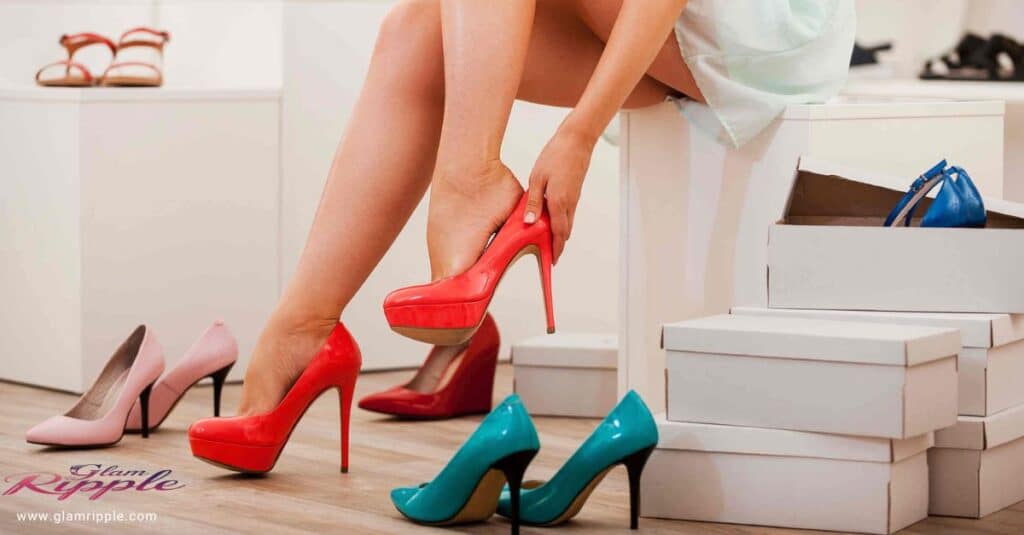
Do you get used to heels? Here’s how to do it! Heat and Wear Method
- Put on thick socks and your new heels.
- Use a hairdryer to apply heat to tight areas for 20-30 seconds.
- Walk around until the shoes cool down.
- Repeat if necessary, but be careful not to overheat the shoes.
The Freezer Bag Trick
- Fill two freezer bags with water.
- Place the bags inside your shoes, focusing on tight areas.
- Freeze overnight.
- As the water expands, it gently stretches the shoe material.
Gradual Wear Schedule
| Day | Wearing Duration | Activity |
|---|---|---|
| 1-2 | 30 minutes | Indoor walking |
| 3-4 | 1 hour | Light outdoor activity |
| 5-7 | 2-3 hours | Normal daily activities |
Do you get used to heels? Here’s how to do it! Heel Hacks: The Dos and Don’ts of Comfortable Wear
Do:
- Invest in quality over quantity: Well-made shoes often provide better support and last longer.
- Rotate your shoes: Give each pair time to recover its shape between wears.
- Pay attention to fit: A professional fitting can make a world of difference in comfort.
Don’t:
- Ignore early signs of discomfort: Address issues before they become painful problems.
- Wear new heels for extended periods without preparation: Build up your wearing time gradually.
- Forget the importance of proper arch support: Consider custom orthotics for optimal comfort.
When to Seek Expert Help: Podiatrist Insights
While many heel-related issues can be solved at home, some problems require professional attention. Consider consulting a podiatrist if you experience:
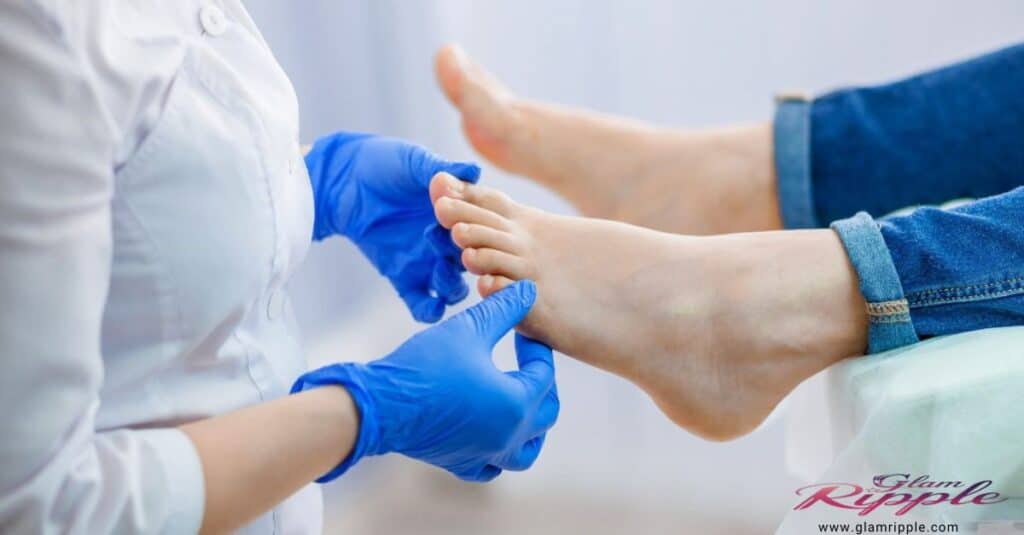
- Persistent pain that doesn’t improve with rest
- Numbness or tingling in your feet
- Changes in foot shape or structure
Custom Orthotics: Are They Worth the Investment?
For many heel enthusiasts, custom orthotics can be a game-changer. They offer:
- Personalized support tailored to your foot shape
- Improved weight distribution
- Potential relief from chronic foot pain
While they can be pricey, the long-term benefits often outweigh the initial cost for serious heel wearers.
Embracing Heels with Confidence and Comfort: Your Path Forward
Mastering the art of wearing high heels is a journey, not a destination. Remember:
- Start with lower, more stable heels and gradually work your way up
- Practice your walking technique regularly
- Invest in quality shoes and comfort-enhancing products
- Listen to your body and give your feet the care they deserve
With patience, practice, and the right approach, you’ll soon find yourself confidently conquering any terrain in your favorite pair of heels. So go ahead, step into those stilettos, and show the world what you’re made of – one fabulous step at a time!
“Give a girl the right shoes, and she can conquer the world.” – Marilyn Monroe
Remember, the key to comfortable high heels is finding the right balance between style and support. With a gradual heel approach and attention to proper fit and care, you’ll be amazed at how quickly you can adapt to life on higher ground. Happy heel-wearing!

Mickel Lee is an experienced fashion blogger at Glamripple, with a keen eye for style and a passion for sharing the latest trends. With years of experience in the fashion industry, Mickel offers readers insightful tips, expert advice, and creative inspiration to elevate their style. His articles blend practicality with flair, making fashion accessible and exciting for everyone.

